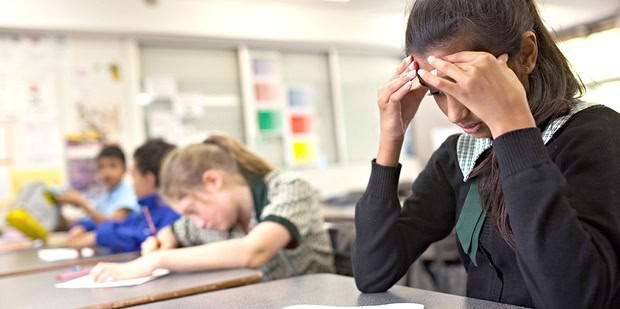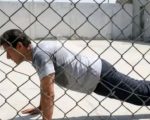Students undergo immense physical and psychological pain during the revision phase which oft starts from mid-January. Sustaining this pressure is an uphill task for the teenagers particularly under the inhumane demanding nature of parents, teachers and school administration.
The monotonous routine at a school where these innocent souls have to produce optimal results in the test series to secure their dignity becomes enormously robotic. Simultaneously, a similar practice is enforced by the academies which they attend in the evening throughout the week. This test series consists of six papers a week often held during the very first period of the day and lasts for almost seven to eight weeks.
Catastrophically, the majority of teachers and parents are unaware of the techniques used successfully worldwide to help kids prepare for the examinations. For Pakistani students, however, every individual is dealt with the same technique where a minority is able to understand the concept leaving the majority in the realm of boredom.
The phenomenon of exam anxiety mentally shatters most of the students. Parents and teachers both keep enhancing the pressure as the examinations get near. During practicing their pressure tactics, they either psychologically damage the kids or harm them physically. Most of the times due to the lack of knowledge, time or intent the whole burden is put on the shoulders of a student and that too without the provision of appropriate guidance. Hence, it can be concluded that most of the schools in the land of pure don’t practice the proper techniques mainly due to lack of expertise.
Throughout the world and particularly in the developed countries certain learning techniques have opted. These methodologies vary according to the nature of the learners. Some of the most effective and practiced techniques include Visual, Kinesthetic and Auditory.
Students who find it easy to learn by using their visual capabilities must be provided with ample material in order that they can learn the concepts by seeing. These students are blessed with the ability to capture images as well as drawing mind maps which retain in their minds for longer periods. They, in fact, comprehend the concepts by seeing. For instance, flash cards having ideas written or drawn on them help these students understand and remember the key facts by using look, cover and check method. These kinds of visual aids also attract the interest of the learners.
A few decades ago, most of the educational institutions had different charts, maps and likewise stuff on the classroom walls which was prepared by students. It was only meant to help the teenagers who were skillful in visual learning.
The most effective way of learning is Auditory learning in which a student discusses a concept with their teacher or fellow student. At the optimal level, the student tries to teach the concept to the rest of the class fellows or siblings. In fact, if a learner could teach their parents or friends and then make them teach back, there is no better way of learning. An Oxford university student successfully revised all the concepts by talking to one of her friends on phone. Her mother, a renowned revision teacher, emphasized that if a student is good at auditory learning then the phone should be allowed during the revision time for it helps a lot in learning. Simultaneously, a phone can be a nightmare during the revision session since social media can easily distract a student and it can stuff it all up.
A kinesthetic learner is an active learner who prefers learning through doing. Instead of teaching this kind, engage in a practical activity. Kinesthetic learners often find teachers who are unable to identify the learning preference which is devastating for the students. For example, if a language learner is provided with a novel sentence and made to identify the function of different words, a kinesthetic learner will enjoy the challenge and try his best to come up with a correct answer. But if the same student is just taught a concept in a traditional manner, it will be extremely difficult for them to grasp the concept.
Implementing any sort of grade on your child or student is unfair. Instead of making them sure that doing their best is adequate helps a lot. Parents’ support is essential since the social and physical impacts of examination anxiety can be overwhelming. Girls suffer more from anxiety than boys do, and in this pressure cooker situation, they mostly overdo that backfires ofttimes. Resultantly, spending long hours behind the desk make all the efforts ineffective. Contrarily, in boys’ case, it’s necessary to supervise them minutely. Students, parents, and teachers all must learn the most appropriate technique to prepare for the exam else all will stress out because it’s not only a students’ exam eventually.














